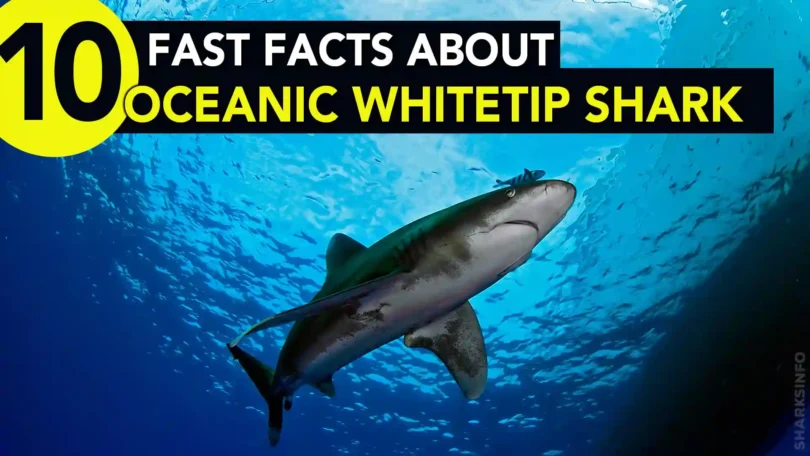Oceanic whitetip sharks are one of the most widely distributed shark species in the world, found in tropical and warm temperate waters of all the world’s oceans. They are a highly migratory species, known for their long-distance movements, which can cover thousands of miles. These sharks are also known for their aggressive behavior and are considered one of the most dangerous sharks to humans. In this article, we will explore 10 fast facts about oceanic whitetip sharks.
10 Fast Facts About Oceanic Whitetip Sharks
The ten facts about oceanic whitetip sharks are stated below:
1: Physical Characteristics
Oceanic whitetip sharks are medium-sized sharks that can grow up to 3.3 meters (11 feet) in length and weigh up to 270 kg (600 lbs). They have a distinctive white tip on the dorsal, pectoral, and caudal fins, which gives them their name. Their body is also covered in small, white spots which allow them to easily blend in their surrounding environments.

2: Distribution and Habitat
Oceanic whitetip sharks can be found all over the world in tropical and warm temperate regions, including the Atlantic, Pacific, and Indian Oceans. They are most prevalent in the open ocean, but they can also be found in coral reefs and around oceanic islands.
3: Diet and Feeding Habits
Oceanic whitetip sharks are opportunistic predators that consume a wide range of prey, including fish, cephalopods, and marine mammals. They have been observed eating a broad variety of seafood, including tuna and mackerel, as well as squid and octopus. They have also been observed preying on carrion, such as floating dead animals.
4: Reproduction and Life Cycle
Oceanic whitetip sharks are viviparous, meaning they give birth to live young. Female sharks can give birth to litters of up to 20 pups, which are born at a length of around 80 cm (31 inches). The pups are born with a fully developed set of teeth and are able to fend for themselves from birth.

5: Behavior
Oceanic whitetip sharks are known for their aggressive behavior, thus, are one of the most dangerous sharks as well. They have been known to attack boats and humans, and have been responsible for several unprovoked attacks on humans.
6: Migration
Oceanic whitetip sharks are highly migratory, with some individuals traveling thousands of miles each year. They have been known to migrate from the Gulf of Mexico to the Gulf of Guinea in Africa, and from the East Coast of the United States to the West Coast of South America.
7: Threats and Conservation
The International Union for Conservation of Nature (IUCN) has designated oceanic whitetip sharks as a vulnerable species due to exploitation, largely as bycatch in commercial fisheries. They are also threatened by habitat loss, oceanic pollution, and climate change, affecting the temperature levels.
8: Threats to Humans
Oceanic whitetip sharks are considered to be one of the most dangerous sharks to humans and have been responsible for several unprovoked attacks. However, the number of attacks on humans is relatively low, and these sharks are more likely to be encountered by divers and swimmers in areas where they are commonly found.

9: Economic Importance
Oceanic whitetip sharks are of economic importance as a commercial species, caught for their fins and meat. Their fins are highly valued and are widely used in some Asian cultures to prepare shark fin soup, as it is considered a delicacy over there.
10: Dark Knight of The Ocean
Oceanic whitetip sharks are not diurnal as they keep on actively swimming and feeding both during the daytime and at night. Thus, they have got the nickname “Dark Knight of the Ocean.”
The Bottom Line
The oceanic whitetip sharks are medium-sized sharks, inhabiting the warm and tropical waters of the world while feeding on a variety of prey like fish and cephalopods. Human activities and climate change has been causing a serious decline in their number, making their population vulnerable. It’s a high-time that we take conservatory measures to protect this specie.







